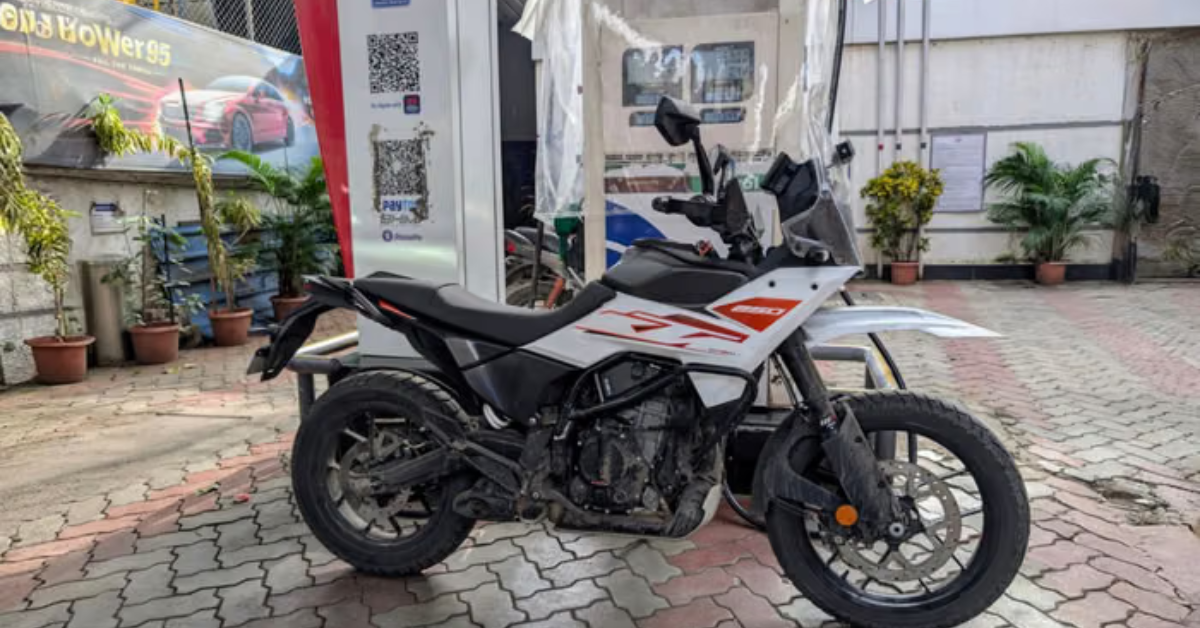When you think of adventure motorcycles, fuel economy may not be the first thing that comes to mind. Most riders prioritize performance, comfort, and off-road ability. However, in today’s world of rising fuel costs, mileage has become just as important—especially for riders who use their motorcycles both for long tours and daily commutes. One of the most popular entry-level adventure bikes in India, the KTM 250 Adventure, has often sparked discussions around its fuel efficiency. So, how well does this machine actually perform when it comes to real-world fuel economy? Let’s dive deep into our 2025 KTM 250 Adventure fuel economy test and analysis.
Engine and Performance: The Heart of the KTM 250 Adventure
The KTM 250 Adventure is powered by a 248.76cc single-cylinder, liquid-cooled engine producing around 30 PS of power and 24 Nm of torque. Derived from the Duke 250, this engine is tuned for a mix of on-road and off-road performance. While it offers brisk acceleration and a strong mid-range, fuel efficiency often depends on how you ride it.
- Highway cruising: Smooth and steady riding between 80–90 km/h.
- City commuting: Stop-go traffic with frequent gear shifts.
- Off-road conditions: Lower gears, high revs, and uneven terrains.
Each of these riding environments affects mileage differently, and that’s where our test comes in.
KTM 250 Adventure Fuel Economy: Tested Results
After conducting a mix of highway, city, and trail riding tests, here are the figures we observed:
- City Mileage: ~28–30 km/l
- Highway Mileage: ~34–36 km/l (steady cruising at ~80 km/h)
- Off-Road Mileage: ~25–27 km/l
- Overall Average: ~31–32 km/l
These numbers place the KTM 250 Adventure in a respectable position among 250cc adventure-tourers. While not as frugal as smaller-capacity commuters, it strikes a balance between performance and practicality.
Factors That Influence Mileage
- Riding Style
Aggressive acceleration and frequent gear changes reduce efficiency. Riders maintaining a smooth throttle get the best results. - Speed
The KTM 250 Adventure delivers optimum efficiency when cruising between 75–85 km/h. Beyond 100 km/h, mileage drops significantly. - Tyres & Terrain
Riding on highways offers better efficiency compared to trails or sandy stretches where more power is required. - Maintenance
Regular servicing, clean air filters, and proper chain lubrication make a noticeable difference in fuel efficiency.
Long-Distance Touring Perspective
Adventure bikes are meant for touring, and mileage becomes crucial when traveling across long stretches where fuel stations may be limited. With a 14.5-liter fuel tank and an average of 31–32 km/l, the KTM 250 Adventure offers a practical range of around 420–450 km per full tank. This makes it suitable for long weekend getaways and even cross-country rides, as riders won’t need frequent refueling stops.
KTM 250 Adventure vs Rivals: Fuel Economy Check
- Royal Enfield Himalayan 450: ~28–30 km/l
- Suzuki V-Strom SX 250: ~36–38 km/l
- BMW G 310 GS: ~28–30 km/l
While the Suzuki V-Strom SX leads in mileage, the KTM 250 Adventure provides a sweet spot between sporty performance and acceptable fuel efficiency.
Who Should Buy the KTM 250 Adventure?
If you’re looking for a bike that balances:
- Good highway cruising ability
- Decent off-road performance
- Respectable fuel economy (~32 km/l average)
- Affordable entry into the adventure touring segment
…the KTM 250 Adventure makes a strong case. However, if your top priority is maximum fuel efficiency, then the Suzuki V-Strom SX 250 might suit you better.
Final Verdict
The KTM 250 Adventure is not built to be a mileage champion—it’s designed to give riders a taste of the adventure lifestyle with sporty performance and versatility. That being said, our test shows it delivers a solid 28–36 km/l depending on conditions, which is impressive for a bike of its size and capability. With rising fuel prices in 2025, this balance of efficiency and performance ensures the KTM 250 Adventure remains a compelling choice for riders who want to explore without constantly worrying about fuel stops.
